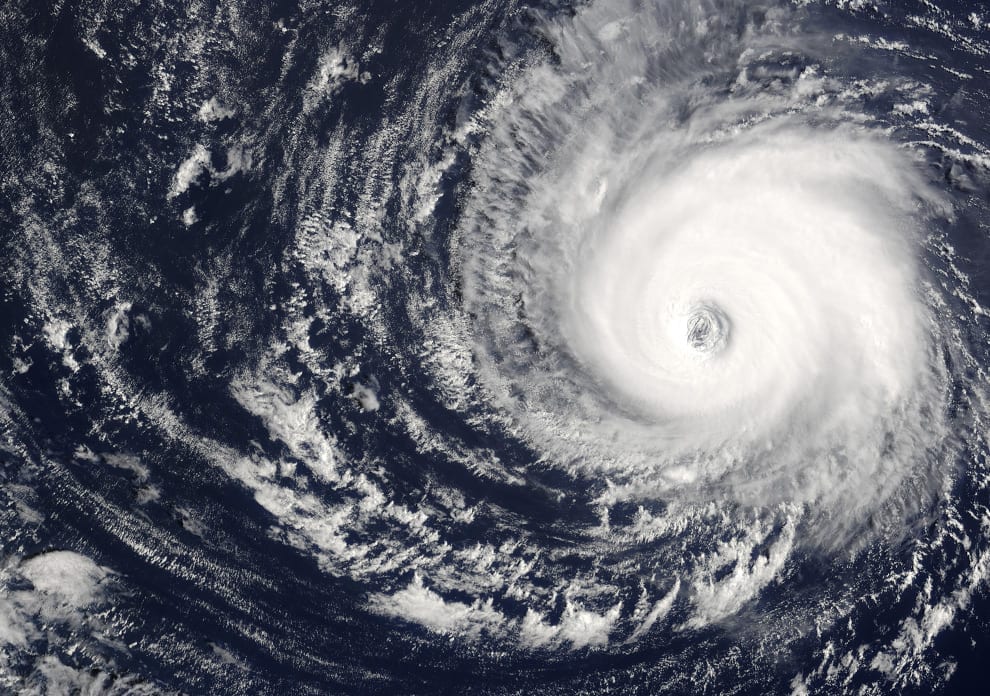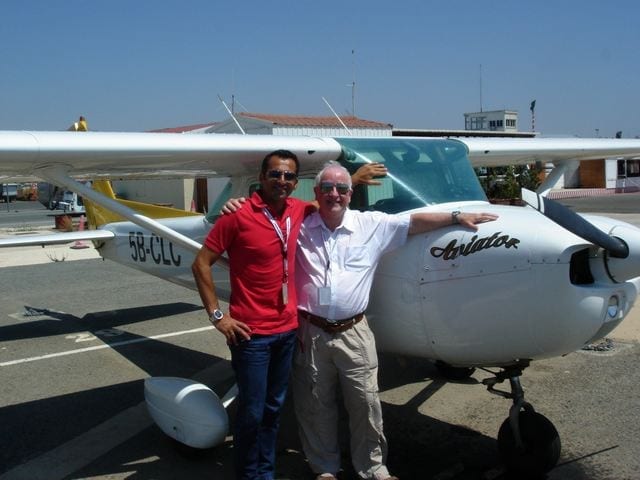“To err is human, but to persevere in error is only the act of a fool.” —Cicero
I had qualified as a fighter pilot in the Indian Air Force in 1966, completed the flight instructor’s course a few months earlier, and just upgraded to QFI Cat B a few days ago. In other words, I could do no wrong. I was indestructible!
I was carrying out an A&E check on a Harvard IV-D which had undergone a routine servicing. I was flying solo and the plan was to do the engine and trim checks followed by a stall and spin. If all was well, I was to do a few aerobatics before heading back and declaring the aircraft serviceable.
Having checked out and written down the engine temp and pressure readings, I got down to the pleasurable part of the flight—aerobatics. Doing aerobatics on the Harvard were a real pleasure; the deep throated roar of the P&W nine-cylinder radial engine was masculine and the controls so responsive. I did a couple of loops, slow rolls, and rolls-off-the-top (Immelmann turns). This was followed by my favourite manoeuvre, stall turns. The first stall turn was to the left and she cartwheeled so beautifully.
The second one was to the right, which in the Harvard was always a challenge as she tended to get stuck if the timing of the rudder, aileron, and throttle wasn’t perfectly coordinated. Therefore, as the big yellow beast wheeled to the right ever so daintily at the very first attempt it gave me a tremendous sense of satisfaction. As the nose snapped to the vertically down position I kicked full opposite rudder and watched as the yaw stopped precisely in line with the reference road in the center of the huge round engine cowling. The rest of the manoeuvre was a piece of cake and, as the IAS increased, I gently pulled the stick back to pull out of the dive.
This is when an unusual flicker of light on the right attracted my attention. For a moment I thought it was a stray reflection from a shiny patch on the starboard wing. But a glance to the right revealed that the entire upper surface of the wing was covered by a thin sheet of flame! I watched in fascination as the flame crept rearwards, gradually turning from yellow-red to blue as the speed increased. It finally extinguished itself as the speed increased.
On levelling out I could see a small quantity of 100/130 octane fuel bubbling out of the starboard tank refuelling cap. I figured that this fuel must have caught fire as a result of flames from the huge exhaust of the engine, which terminated at the wing root on the starboard.
The correct thing at this stage would have been to quickly thank the Lord for putting out the fire and high-tail it back to base. But rookie QFIs aren’t known to be very wise. This was mistake number one; but as old Cicero pointed out, this was excusable as it is natural for men to err!
Having gained some height, I decided to “confirm the snag” by doing another stall turn. Mistake number two (keep counting).
Once again, I put her into a dive and pulled out to point the nose heaven-wards. Once again the manoeuvre was as close to perfection as I could have wished for. The slight inside aileron and right rudder were perfectly timed, as was the gentle throttling back to coax her around to the right. I had by now forgotten about the “snag” and it was a bit of a surprise to once again find the starboard wing covered with a thin layer of flames which rapidly blew towards the trailing edge before disappearing.
It may be pertinent to mention at this stage that I have always been fascinated by fire. I can watch the flames of a warmly glowing fireplace or a bonfire for hours without getting bored. I am sure many readers share this fascination. But I am not so sure how many pyromaniacs fit the latter part of Cicero’s observation about persevering in error. That day I certainly gave this wise old man a chance to be proved right as I went in for yet another stall turn! Mistake number three, to help those readers who are counting.
This time the Lord must have been having a coffee break. I pulled the Harvard vertically up, gave just the right amount of stick, rudder, and throttle. But wouldn’t you know it, she refused to yaw and hung there in the sky with the nose pointing heaven-wards for what seemed like an eternity.
I braced myself for the inevitable hammer stall, caused by the relative airflow of the tail slide catching the elevator from the rear and reversing Bernoulli’s principle. The hammer stall of the Harvard was not unsafe, but it was not for the faint hearted either, and its viciousness was directly proportional to the length of time the aircraft stayed in the vertically up position. Considering the interminable time the aircraft remained vertically up this time, almost as if held by an invisible string, I instinctively knew this time it was going to be a whopper of a hammer stall.
I wasn’t disappointed. Suddenly the nose started pitching forward and I hung on to keep the stick in a neutral position as we (my parachute and I) were lifted out of the seat due to the negative G. In a flash the nose went down past the horizon as fast as a bullet train. Then, almost as suddenly as the hammer stall started, it was over; the nose was now pointing straight down and the speed was building up. “No sweat,” I said to myself. I must admit I was feeling quite a hot rod!
But it didn’t take me long to realise why I was feeling like a hot rod—it was due to yet another fire! This time it wasn’t a thin layer of flame; the whole starboard wing, even the root area, was ablaze and I could feel the heat on my face through the canopy. I could also see the yellow paint bubbling and turning black. Even after all these years I vividly recall the smell of petrol fumes inside the cockpit. The prolonged negative G had obviously allowed a lot of fuel to spill. The thought crossed my mind that this was the end and that soon the whole aircraft would explode.
But I wasn’t ready to give up. Though I had done some pretty stupid things that day I fortunately hadn’t taken total leave of my senses. I held the aircraft in a dive, and carried on diving till the IAS needle would go no further. The whole airframe was groaning and shuddering as it hit Vne. But I could see we were winning (the Harvard and I). I could see the yellow flames turning to blue, like the ionised flow from a blow-torch, angry and hot. But nevertheless sliding back to the trailing edge, being blown away by the speeding airflow over the wings.
At last, at long last, the flames died and I started levelling out. A glance at the altimeter showed I was down to about 1000 ft. AGL. Needless to say, this time I did the right thing and headed back to base to land. Post-flight inspection revealed nothing more than a loose refuelling cap, but because of my folly the aircraft could have been lost. Fortunately, I got away with only a blackened wing. It could have been a lot worse… and Cicero’s wise observation would have claimed another foolish victim.
Editor’s Note: This article is from our series called “I Can’t Believe I Did That,” where pilots ‘fess up about mistakes they’ve made but lived to tell about. If you have a story to tell, email us at: [email protected].
- Fire, fire, fire - July 20, 2021














Subhash: outstanding! I’m glad I’m not the only one…
As you flew pressurized fighters, you can understand the ramifications of droning along in an F-86 somewhere east of Paris at 40000 feet – give or take – and pushing on the ‘canopy close’ switch to see if the canopy was really closed. (I know, I know; what was I thinking?)
After the mist cleared and the pressure breather ceased, at least I didn’t repeat the exercise… (;>0)
Ha ha. Thank God we got away and lived long enough to share stories and laugh at our stupidities.
Great story, Sir! I was there with you can could see myself in the same situation. Another good reminder that it’s better to troubleshoot problems on the ground.
Somehow we bold pilots managed to outwit the bold part of our makeup and we actually live to be old! Good on you for being one of us!
1956 Author a Flight Cadet in the Royal Canadian Air Force flying Harvard 4 out of RCAF Cebtralia Ontario near London Not and Lake Huron. Solo detail on a weekend towards the end of the Harvard course and looking forward to the jet T33 in Alberta. Decided to fly a low pass over our relief field at Grand Bend as normally their ATC went home on Saturdays. The low pass was lower than intended, prop touched the tarmac and the P&W engine note changed from smooth to a rather disturbing rattle.Idiot cadet, too scared to bale out over Lake Huron returns rattling to Centralia hoping an explanation of a poor landing might cover the bent prop. After landing I noticed the tips had bent in opposite directions about 6 inched each way, never knew why from that time till now. Bad decision as Grand Bend ATC was manned by two hidden NCOs and my number, black on bright yellow paint was duly re[ported back home. As our OC Flying had stated “Next guy goes low flying and is caught is OUT” So I was sent back to the UK 1st Class on a liner, the RCAF didn’t believe in air travel. All went well as the RAF reckoned I had damaged one of her Canadian Majesty’s airplanes and thus not one on their imprest.Two years later after Provost and Vampire flying, I flew two operational tours on the Hawker Hunter, one in the Cold War in West Germany and the second in a slightly warmer one on ground attack n Arabia. Never damaged the paint work myself though some sharp shooting Arabian gentlemen did put a hole in my Hunter from time to time. So if you are going to fly unauthorised low pass anywhere do check if someone is in hiding with a camera and note book, Mac